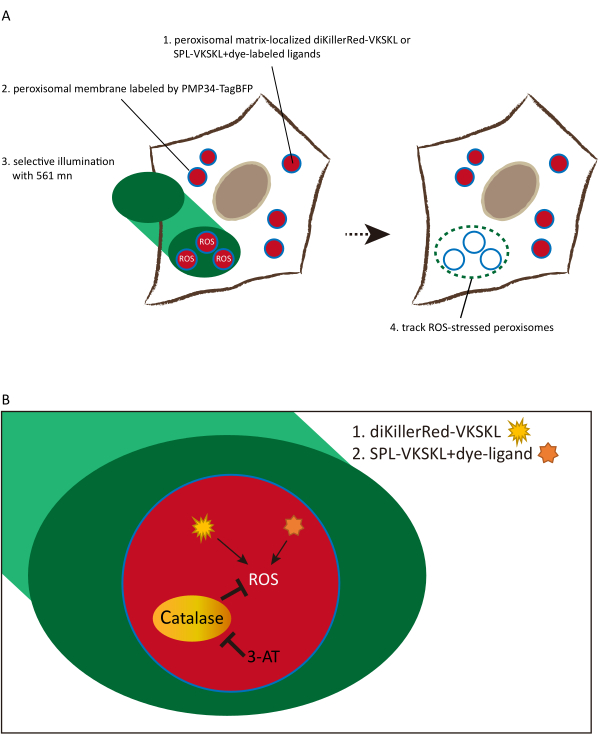
 中央研究院 生物化學研究所
中央研究院 生物化學研究所
Mammalian cells can turn over peroxisomes through Stub1-mediated pexophagy. The pathway potentially permits cellular control of the quantity and quality of peroxisomes. During this process, heat shock protein 70 and the ubiquitin E3 ligase, Stub1, translocate onto peroxisomes to be turned over to initiate pexophagy. The Stub1 ligase activity allows the accumulation of ubiquitin and other autophagy-related modules on targeted peroxisomes. Elevating reactive oxygen species (ROS) levels within the peroxisomal lumen can activate Stub1-mediated pexophagy. One can, therefore, use dye-assisted ROS generation to trigger and monitor this pathway. This article outlines the procedures for using two classes of dyes, fluorescent proteins and synthetic fluorophores, to initiate pexophagy within mammalian cell cultures. These dye-assisted ROS generation-based protocols can not only be used to target all the peroxisomes within a cell population globally but can also permit the manipulation of individual peroxisomes within single cells. We also describe how Stub1-mediated pexophagy can be followed using live-cell microscopy.
